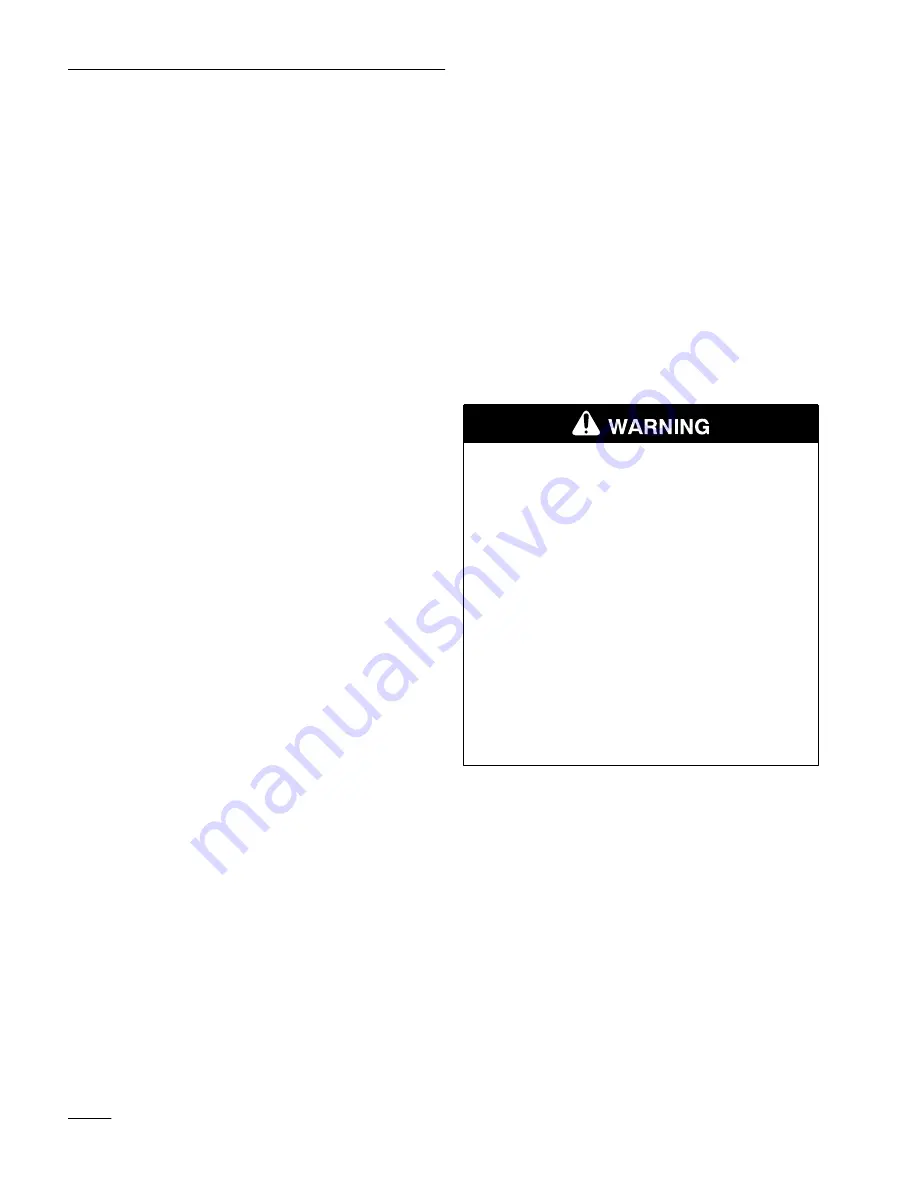
Maintenance
30
7.
Start the engine and let it run for about two
minutes to purge air from the system.
8.
Stop the engine and check for leaks.
9.
Check the level of the fluid and add enough to
raise the level to the green mark on the dipstick.
IMPORTANT: Do not overfill the tank with
fluid. Overfilling will cause system damage.
Changing the Hydraulic Fluid
Change the hydraulic fluid every 800 operating hours
or yearly.
Note:
If fluid becomes contaminated, contact
your local Toro dealer because the
system must be flushed. Contaminated
fluid looks milky or black when
compared to clean oil.
1.
Position the traction unit on a level surface,
lower the loader arms and stop the engine.
Remove the key.
2.
Place a 15 gallon drain pan under the hydraulic
tank.
3.
Remove the drain plug from the bottom rear of
the tank and let the hydraulic fluid flow into the
drain pan.
4.
Install and tighten the plug when finished
draining.
5.
Remove the filler cap and fill the tank with
approximately 15 gallons of hydraulic fluid.
Refer to Checking Hydraulic Fluid.
IMPORTANT: Use only hydraulic fluids
specified. Other fluids could cause system
damage.
6.
Install the filler cap.
7.
Start the engine and use all hydraulic controls to
distribute hydraulic fluid throughout the system.
8.
Stop the engine.
9.
Check level of the fluid and add enough to raise
level to the green mark on the dipstick.
IMPORTANT: Do not overfill the tank with
fluid. Overfilling will cause system damage.
Check the Hydraulic Lines
After every 100 operating hours, check the hydraulic
lines and hoses for leaks, loose fittings, kinked lines,
loose mounting supports, wear, weather, and chemical
deterioration. Replace all moving hydraulic hoses
every 1500 hours or 2 years, which ever comes first.
Make necessary repairs before operating.
POTENTIAL HAZARD
•
Hydraulic fluid escaping under pressure
can penetrate skin and cause injury.
WHAT CAN HAPPEN
•
Fluid accidentally injected into the skin
must be surgically removed within a few
hours by a doctor familiar with this form of
injury or gangrene may result.
HOW TO AVOID THE HAZARD
•
Keep body and hands away from pin hole
leaks or nozzles that eject high pressure
hydraulic fluid.
•
Use cardboard or paper to find hydraulic
leaks, never use your hands.
Traction Drive Chains
Checking the Tension
Check the drive chain tension before using the
traction unit for the first time and every 50 hours of
use thereafter.
Drive chains should have about 1–1/2 to 2–1/2 inches
of slack between the bottom of the chain guard and
the bottom chain span when the top chain span is
pulled tight. Use the following procedure to check
the tension:
Summary of Contents for 22302TE
Page 8: ...Safety 6 Slope Chart...


























